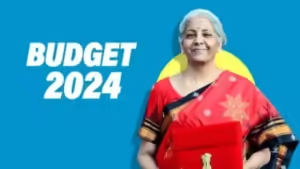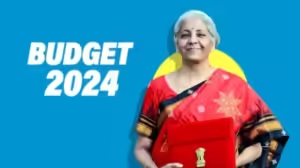GST WEEKLY UPDATE : 33/2022-23 (13.11.2022) By CA Vipul Khandhar

By CA Vipul Khandhar
- The Goods and Services Tax E-Invoice System has released Updated Frequently Asked Questions (“FAQs”) related to e-Invoicing:
Yes, if you are eligible for e-Invoicing, all the invoices of B2B and Exports need to be registered.
No, there is no time limit for delivery of goods or generation of e-waybill for the e-Invoice.
Yes, if you are eligible for e-Invoicing, all the invoices including RCM invoices issued by the Supplier need to be registered.
Type of GST (whether IGST or CGSTS/SGST) is determined by POS (Place of Supply). If the Supplier state is same as POS, then it is CGSTS/SGST else IGST for B2B transactions.
The e-Invoice for services may be generated like any other invoice, by mentioning related SAC code and the total price in unit rate and the quantity may be mentioned as one.
Ideally, the e-invoice must be generated after preparing the manual invoice and before issuing it to the customer. The system presently allows to register invoices for the previous periods also.
Freight charges may be entered as line items in case there is a GST component or else they may be entered under ‘Other charges’.
No, it is not required. e-Waybill is required only if at least one of the items in the invoice has Goods and the value of invoice exceeds Rs 50 thousand.
Yes, they can be entered. Please refer the schema of the invoice at https://einv-apisandbox.nic.in/version1.03/generate-irn.html#JSONSchema for more details.
No, there is no time limit to prepare the credit notes or debit notes against the e-Invoice.
No, shipping bill number or date is not mandatory for preparing e-invoice.
No, e-Invoice is applicable only if the notified turnover is crossed in the previous years.
Invoice sent to the customer must contain the IRN number and the QR Code. Along with this you may send the regular invoice also.
The e-invoice portal https://gepp.einvoice1.gst.gov.in helps the suppliers in registering the invoices without the necessity for ERP system. This is a browser based and user friendly portal by which the e-invoices can be generated. The application may also be downloaded on to the mobile.
Yes, its applicable. If the customer is of type SEZ, then e-Invoice may be generated using transaction type as SEZWP / SEZWOP by the Supplier.
Ideally, e-invoice must be generated after making the manual invoice and before issuing the invoice to the customer. Presently, system allows for the invoices to be registered for previous period also. for the invoices to be registered for previous period also.
Presently, system allows for the invoices to be registered for previous period. So, if you have missed uploading, then you may still generate e-Invoice for the previous period invoices.
No, supplier cannot upload the digitally signed invoice to the portal. The e-invoice system will digitally sign the e-invoice details uploaded to the portal and return the signed invoice and QR code to the Supplier.
You may visit https://einvoice1.gst.gov.in/Others/CBT and https://gepp.einvoice1.gst.gov.in /downloads/Welcometogepp.mp4 to understand the e-Invoice system and GePP-On system.
There is no specific place for printing the QR Code, IRN and Acknowledgement number on the invoice. However, they should be visible and in case of QR code, it should be possible to scan it.
e-waybills may be generated for all the modes of travel such as Road, Train, Air and Ship. In case of train, you may enter the railway receipt number and date instead of vehicle number.
Document number in e-Invoice should not be starting with 0, / and -. You should pass the document number without such characters.
All invoices to be registered on the portal should contain the values in INR, however there are some optional fields in the schema in which the foreign currency may be included.
Please refer the schema at https://einv-apisandbox.nic.in/version1.03/generate-irn.html#JSONSchema
- CLARIFICATION ON GST INVERTED DUTY REFUND (Source: Circular 181/13/2022-GST dated 10.11.2022):
- Question : Whether the formula prescribed under Rule 89(5) of the CGST Rules, 2017 for calculation of refund of unutilised input tax credit on account of inverted duty structure, as amended vide Notification No. 14/2022-Central Tax dated 05.07.2022, will apply only to the refund applications filed on or after 05.07.2022, or whether the same will also apply in respect of the refund applications filed before 05.07.2022 and pending with the proper officer as on 05.07.2022?
Answer : It is clarified that the said amended formula for calculation of refund of input tax credit on account of inverted duty structure would be applicable in respect of refund applications filed on or after 05.07.2022. The refund applications filed before 05.07.2022 will be dealt as per the formula as it existed before the amendment made vide Notification No. 14/2022-Central Tax dated 05.07.2022.
- Question : Whether the restriction placed on refund of unutilised input tax credit on account of inverted duty structure in case of certain goods falling under chapter 15 and 27 vide Notification No. 09/2022-Central Tax (Rate) dated 13.07.2022, which has been made effective from 18.07.2022, would apply to the refund applications pending as on 18.07.2022 also or whether the same will apply only to the refund applications filed on or after 18.07.2022 or whether the same will be applicable only to refunds pertaining to prospective tax periods?
Answer : It is clarified that the restriction imposed by the said notification would be applicable in respect of all refund applications filed on or after 18.07.2022, and would not apply to the refund applications filed before 18.07.2022.
- CBIC issued Guidelines for Verifying Transitional CreditCircular No. 182/14/2022-GST dated November 10, 2022:
- The jurisdictional tax officers can access the TRAN-1/TRAN-2 filed/revised by the applicant on their back office systems (which is the CBIC-AIO portal for the central tax officers, the respective State portal for MODEL-1 States and BO portal for MODEL 2 States). Further, a self-certified downloaded copy of TRAN-1/TRAN-2 filed/revised by the applicant shall also be made available to the jurisdictional tax officer by the said applicant as mentioned in Para 4.5 of Circular 180/12/2022 dated September 09, 2022.
- The verification of the transitional credit shall be conducted by the jurisdictional tax officer who will pass an appropriate order regarding the veracity of the claim filed by the applicant, based on all the facts and the provisions of the law. In respect of TRAN-1/TRAN-2 filed/revised by the applicant under the administrative control of the central tax authorities, such verification and issuance of order shall be done by the jurisdictional officer of central tax, whereas in respect of TRAN-1/TRAN-2 filed/revised by the applicant under the administrative control of the state tax authorities, the same shall be done by the jurisdictional officer of state tax. The jurisdictional tax officer shall start the verification process immediately on availability of TRAN-1/TRAN-2 filed/revised by the applicant on the back office system or on receipt of self-certified downloaded copy of the same from the applicant, whichever is earlier. It is needless to mention that principles of natural justice shall be followed in the process of passing the order relating to allowance or disallowance of the Transitional Credit.
- The jurisdictional tax officer shall, on the basis of declaration made by the applicant in the format specified in Annexure A to Circular no. 180/12/2022 dated September 09, 2022, and on the basis of data available on the back office system, shall check whether the applicant had earlier filed TRAN-1/ TRAN-2 or not. In cases where TRAN-1/ TRAN-2 had already been filed by the applicant earlier, the tax officer shall check whether there is any change from the earlier filed TRAN-1/TRAN-2 or not. In case, there is no change from the earlier filed TRAN-1/ TRAN-2, then such claim of transitional credit is liable for rejection by the tax officer, through a reasoned order, after providing due reasonable opportunity to the applicant.
- In other cases, the jurisdictional tax officer shall proceed for verification of claim of transitional credit made by the applicant in FORM TRAN-1/TRAN-2. In this regard, in respect of transitional credit pertaining to central tax, he may refer to the guidelines detailed in Annexure I to this circular. In respect of verification of transitional credit pertaining to the State Tax/Union territory Tax, the tax officer may refer to the guidelines issued by the relevant state/UT, if any.
- There may be cases where the transitional credit claim filed/revised by the applicant may have components of both central tax and state/UT tax. In such cases, where the applicant is under the jurisdiction of central tax officer and where the transitional credit claimed has component of state/Union Territory tax also, the jurisdictional central tax officer shall refer the said claim for verification of component of state/UT tax to his counterpart state/UT tax officer. For this purpose, he shall share the list of GSTINs/ARNs with the counterpart officer, in respect of which verification report is needed from him, on a weekly basis, along with an intimation of the same to the nodal officer of central tax as well as state/UT tax referred in Para 6.1 below through his official email ID or physically. Similar action, as above, shall also be taken by the jurisdictional state/UT tax officers in cases where the applicant is under the jurisdiction of state/UT tax officer and where the transitional credit claimed has component of central tax also.
- The jurisdictional tax officer shall, in parallel, continue the verification of the remaining portion of the transitional credit at his end.
- The jurisdictional tax officer and the counterpart tax officer shall verify the transitional credit claimed under the CGST or the SGST head, as the case may be, by referring to the guidelines detailed in Annexure I to this circular for transitional credit pertaining to central tax and the guidelines issued by the relevant state/UT for verification of transitional credit pertaining to the State Tax/Union territory Tax, as applicable. While conducting the verification, the officer must also check whether any adjudication or appeal proceedings in TRAN-1/TRAN-2 related matter are pending/ concluded against the applicant. In such cases, where any adjudication or appellate proceedings have been initiated against the applicant in respect of TRAN-1/TRAN-2, the officer should take a note of the relevant facts in the notice/ order, and the grounds/reasons for inadmissibility of transitional credit, if any, in the said notice/ order.
- In respect of verification done by the counterpart officer, after verification, he will prepare a verification report, in the format detailed in Annexure-II of this circular, specifying the amount of transitional credit which may be allowed to be credited to the electronic credit ledger of the applicant and the amount which is liable for rejection, along with detailed reasons/ grounds on which the said amount is liable to be rejected. Such duly signed verification report shall be sent by the counterpart officer to the jurisdictional tax officer at the earliest, though generally not later than ten days from the date of receipt of the request from the jurisdictional officer. In case, where the adjudication or appeal proceedings in respect of TRAN-1/TRAN-2 related matter are pending/ concluded against the applicant, the counterpart officer shall categorically bring out the relevant facts in his/her verification report along with his detailed findings, admissibility/ inadmissibility, reasons of inadmissibility thereof and the copy of the relevant notice and/or orders.
- For the purpose of verification of the claim of the transitional credit, the jurisdictional tax officer as well as the counterpart tax officer, if required, may call for relevant records including requisite documents/returns/invoices, as the case may be, from the applicant.
- After receiving the verification report from the counterpart officer, the jurisdictional tax officer shall decide upon the admissibility of the credit claimed by the applicant. In case the jurisdictional tax officer finds that the transitional credit claimed by the applicant is partly or wholly inadmissible as per the provisions of the Act and the rules thereof, then a notice shall be issued by the jurisdictional tax officer to the applicant preferably within a period of seven days from the receipt of report from the counterpart officer, seeking explanation of the applicant as to why the said credit claimed by him should not be denied wholly/partly, as the case may be. The applicant shall also be provided an opportunity of personal hearing by the jurisdictional tax officer in such cases. If required, the jurisdictional tax officer may seek comments of the counterpart officer on the submissions made by the applicant in so far as the said submission relates to the tax (central or State) being administered by such counterpart officer.
- After considering the facts of the case, including verification report received from the counterpart officer, submissions made by the applicant and the comments, if any, of the counterpart officer on the same, the jurisdictional tax officer shall proceed to pass a reasoned order, preferably within a period of fifteen days from the date of personal hearing, specifying the amount of transitional credit allowed to be transferred to the electronic credit ledger of the applicant and upload a pdf copy of the said order, on the common portal for crediting the amount of allowed transitional credit to the electronic credit ledger of the applicant. In any case, such order shall be passed within a period of 90 days from December 01, 2022 i.e. up to February 28, 2023.
- Where the amount credited to the electronic credit ledger pursuant to the originally filed TRAN-1/TRAN-2 exceeds the amount of credit admissible in terms of the revised TRAN-1/TRAN-2 filed by the applicant, such excess credit is liable to be demanded and recovered from the applicant, along with interest and penalty, in accordance with the provisions of Chapter XV of the Act and the rules made thereunder.
- DGFT Issues Notification for consideration of INR payments under new mechanism for Export Incentives:
- The much awaited update to recognize the INR Payments received for exports as per the new RBI Circular dated 11th July 2022 to be made eligible for various Export Incentives under the FTP has been finally announced.
- DGFT vide Notification No. 43/2015-20 Dt. 09.11.2022 & Public Notice No. 35/2015-20 Dt. 09.11.2022 have announced the same.
- Export proceeds realised in INR as per the new mechanism under para 2.52(d) (ii) would be eligible for fulfilment under of Export Obligations under FTP (2015-20) [Para 2.53 has been modified]
- Status Holder Certificate criteria would be considered on basis of FOB in free foreign exchange or INR under para 2.53 [Para 3.20 has been modified]
- Currency of Realisation has been modified to state that Export Proceeds must be realised in freely convertible currency or INR as per Para 2.53 [Para 4.21 has been modified]
- Realisation of Export proceeds under Chapter 5 (EPCG) has been allowed in FFE or INR as per para 2.53.
- The above notification and Public Notice come into force with immediate effect (i.e 09.11.2022).
Disclaimer:
This publication contains information for general guidance only. It is not intended to address the circumstances of any particular individual or entity. Although the best of endeavour has been made to provide the provisions in a simpler and accurate form, there is no substitute to detailed research with regard to the specific situation of a particular individual or entity. We do not accept any responsibility for loss incurred by any person for acting or refraining to act as a result of any matter in this publication.
(The Author is a well known Chartered Accountant practicing in the field of Direct and Indirect Taxes at Ahmedabad)





